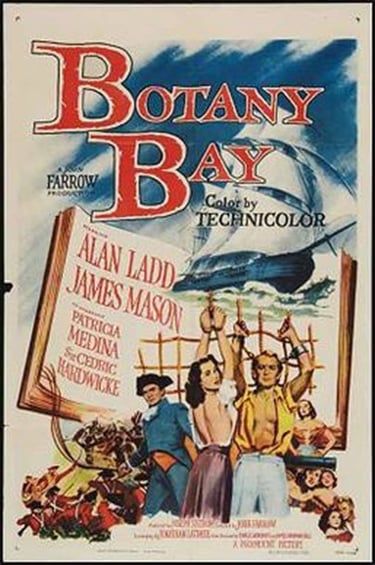Patterns of the Voyage
11/5/20242 min read


Poster for the 1953 movie, Botany Bay, produced by the Australian-born Hollywood movie producer, John Farrow
The first rite of passage – the slough of despond which all landsmen had to negotiate – was seasickness. Occasionally mentioned but rarely described in any detail, the best account comes from later years:
No sooner were the sails unfurled than sea-sickness commenced, and in a short time became general. There were only half a dozen persons in the prison who escaped the malady. ‘Accounts were cast up,’ without ceremony, not only on the floor but in the berths; and our apartment was rendered truly horrible. An entire week passed before it could be properly cleansed... (see Catspaw on Mal de Mer on a Convict Ship)
Each voyage was different, particularly in these early years when so much was being learned, but there was a pattern to the passage south through the Atlantic and across the Southern Ocean which changed little over time. Their first experience of a heavy sea usually occurred as they crossed the Bay of Biscay, notorious to this day for its massive swells and westerly gales. The winds would remain variable until the ships were off the north-west coast of Africa, where they would catch the trade winds, which carried them steadily on their journey south.
By this time, the prisoners would have become broadly familiar with the rhythms of a ship at sea – the repeated tacking and wearing, the making and shortening of sails – and the routines that would punctuate their lives in the months ahead.
As they entered the tropics, the gentle breezes would give way to days and nights of oppressive heat, a ‘stupid calm’ interrupted from time to time by squalls that would spring the main top gallant mast. Awnings would be installed on the weather deck to provide shelter from the sun, windsails would be fitted to the hatchways to funnel fresh air down into the lower decks. For the convicts, this was often the most difficult part of the voyage.
Having crossed the Equator, they would catch the south-east trades, which would carry them to Rio de Janeiro or the Cape, where the convicts would be supplied with fresh provisions.
The final stage in the Convict’s Progress was a passage across the Southern Ocean, where the prisoners were tossed around in their berths by violent swells and heavy gales which sent freezing cold water pouring down into the lower decks, leaving them and their bedding soaked for days on end.
And the end of the voyage was to arrive at ‘Botany Bay’, the place of legend they had sung about at Newgate and in the stewpots of St Giles.
Contact us
Connect with us
Botany Baymen acknowledges the traditional custodians of country throughout Australia and respects their connection to land, water and community.
© Botany Baymen 2024. All rights reserved.
You may download, display, print and reproduce this content for your personal or non-commercial use but only in an unaltered form and with the copyright acknowledged.

